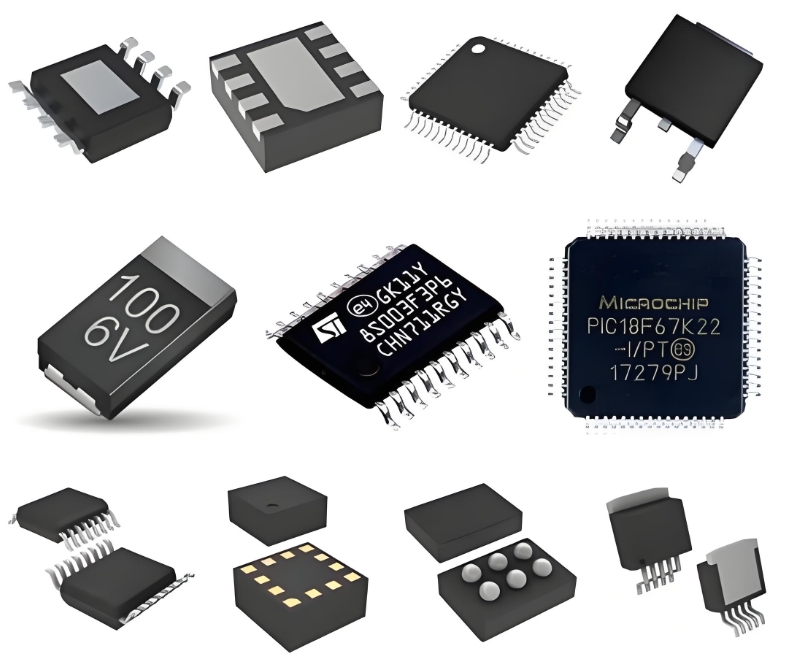**AD8402ARZ50: A Comprehensive Guide to the 256-Position Digital Potentiometer**
In the realm of precision electronic control, the mechanical potentiometer is increasingly being replaced by its digital counterpart. The **AD8402ARZ50** from Analog Devices stands as a prominent example of this technology, offering designers a robust and flexible solution for adjustable resistance applications. This integrated circuit (IC) is a **dual-channel, 256-position digital potentiometer** that provides unparalleled accuracy and programmability.
**Understanding the Digital Potentiometer**
A digital potentiometer, or "digipot," is a solid-state device that mimics the analog function of a traditional three-terminal potentiometer or variable resistor. Instead of a physical wiper moved by a knob, it uses digital signals to control the resistance value between its terminals. The **AD8402ARZ50** features two independent potentiometers in a single package, each capable of providing **256-tap points** of resolution. This allows for extremely precise adjustments in a circuit without any moving parts, making it immune to the wear and tear, vibration, and environmental contamination that plague mechanical pots.
**Key Features and Specifications**
The AD8402ARZ50 is defined by a set of impressive specifications that make it suitable for a wide range of applications:
* **Resolution:** **256 Positions (8-bit)** per channel for fine-grained control.
* **Nominal Resistance:** **50 kΩ** per potentiometer.
* **Interface:** Simple **3-wire serial peripheral interface (SPI)** for easy communication with microcontrollers and digital processors.
* **Dual Channels:** Two independent potentiometers in a single 14-lead SOIC package, saving board space and simplifying design.
* **Wiper Memory:** Non-volatile memory (EEPROM) that stores the wiper position upon power-down, ensuring the device wakes up in its last known state.
* **Wide Supply Range:** Can operate from a **+2.7 V to +5.5 V** single supply, compatible with most modern logic families.
**Internal Architecture and Operation**
The internal structure of the AD8402ARZ50 consists of a series of resistor segments connected by CMOS switches. The wiper's position is determined by the value stored in an internal 8-bit RDAC register. When the microcontroller sends data via the SPI interface (clock **CLK**, chip select **CS**, and data input **SDI**), the register value updates, and the internal switches reconfigure to connect the wiper to the appropriate tap point on the resistor ladder. This changes the resistance between the **Terminal A (Ax)**, **Terminal B (Bx)**, and **Wiper (Wx)** for each channel.
**Primary Applications**

The versatility of the AD8402ARZ50 allows it to be used in numerous scenarios:
* **Programmable Gain Amplifiers (PGAs):** Replacing fixed resistors in op-amp circuits to digitally control gain.
* **Volume and Tone Control:** Providing silent, click-free adjustment in audio equipment.
* **LCD Screen Contrast and Brightness Adjustment:** A very common use case in embedded displays.
* **Sensor Calibration and Trimming:** Allowing for automated, remote calibration in industrial systems without physical access.
* **Test and Measurement Equipment:** Where software-controlled precision references are required.
**Advantages Over Mechanical Potentiometers**
The shift to digital pots like the AD8402ARZ50 offers significant benefits:
* **Higher Reliability:** No mechanical wear ensures a much longer lifespan.
* **Remote Control and Automation:** Resistance can be set and changed by software, enabling remote adjustments and complex automated sequences.
* **Space Efficiency:** A single IC replaces multiple mechanical components.
* **Resistance Stability:** Less susceptible to environmental factors like humidity and dust.
**Design Considerations**
When implementing the AD8402ARZ50, designers should consider a few points. The **SPI interface timing** must be adhered to for reliable communication. Furthermore, while the digipot handles signal-level voltages well, the analog voltage on any terminal must remain within the supply rails (VSS to VDD). Understanding the **wiper resistance (typically 50 Ω)** is also crucial for high-precision applications, as it acts as a small series resistor in all settings.
**ICGOODFIND**: The AD8402ARZ50 is a highly integrated, precise, and reliable solution that effectively modernizes circuit adjustment. Its dual-channel 50 kΩ architecture, 256-step resolution, and simple SPI interface make it an indispensable component for designers seeking to add digital control to analog signals in audio systems, instrumentation, and automated calibration circuits.
**Keywords**: Digital Potentiometer, 256-Position, SPI Interface, Programmable Gain, Wiper Memory
